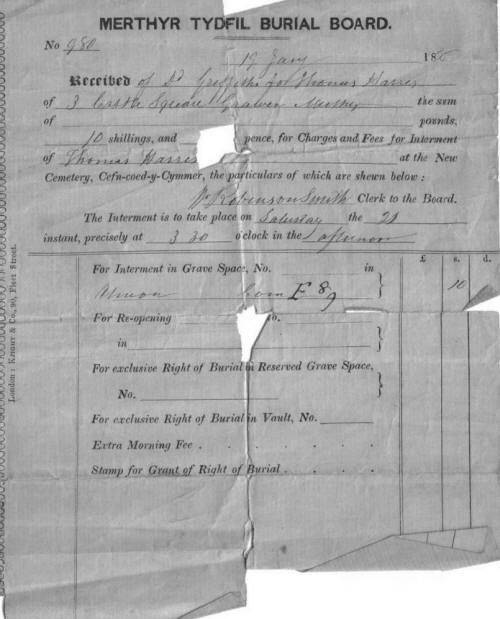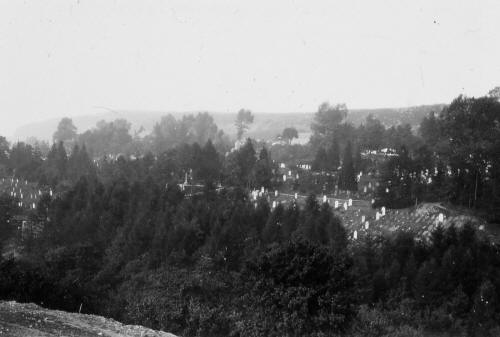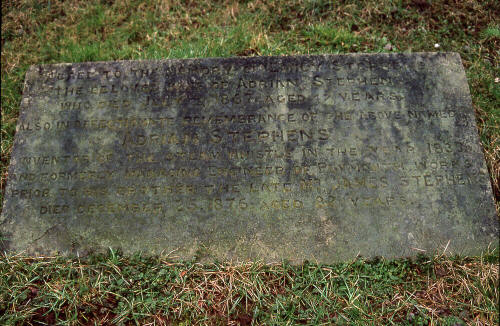|
Cefn-Ffrwd is the largest Cemetery in the Borough with approximately 40
acres. In the nineteenth century burial was a huge problem here. In a
hundred years Merthyr Tydfil grew from a Parish of just over 500 persons
to the only large town in Wales with a population of over 50, 000 in
1850. During the 1849 cholera outbreak there were over 1,000 deaths in
one month alone. Infant mortality was high and other diseases such as
smallpox and TB were rife. Not all the chapels and churches had their
own burial ground and the responsibility for burial lay with the Parish
Authorities. In 1850 there were three Merthyr Tydfil Parish Burial
Grounds, the Graveyard around St. Tydfil’ s Church, the Cemetery in
Twynyrodyn and the new so called ‘cholera’ Cemetery in Thomastown.
Dowlais had two Parish cemeteries, St John’s Church and a small cholera
cemetery near the Works. This was a time when cremation was unheard of,
and these soon became inadequate. The Board of Health, founded in 1850,
took advantage of a new Act of 1852, which empowered them to set up
Cemeteries and leased land in Breconshire to set up a new Cemetery. The
Cemetery was managed by the Burial Board. The first burial took place on
the 16th April 1859. The Ffrwd portion of the Cemetery was
added in 1905, the first burial being on November 20th, 1905.
Average burials in the nineteenth century were around 400 annually. In
1878 the son of one of the gravediggers set fire to the ‘dead-house’ of
the Cefn Cemetery and a report of the 21st of December 1878
described the ‘unseemly behaviour’ of children frequently climbing about
the monuments of the Cemetery. In 1902 when the road to Cardiff was
widened a large section of the St Tydfil Graveyard was removed and the
‘remains’ were moved to Cefn Coed Cemetery. Those reburied included
Charles Wood, who erected the first furnaces at Cyfarthfa.
Easter was a traditional time for ‘flowering the graves’ and a report in
the Merthyr Express of the 26th March 1916 records that:-
‘at
Cefn Cemetery on Friday and Saturday, relatives of the dead attended
from long distances to clean stones and plant flowers’.
Cefn Coed
became a Municipal Cemetery for Merthyr Tydfil in 1905. Welsh Baptists
were buried in unconsecrated ground and Roman Catholics in consecrated
ground. There is a separate large Jewish Cemetery at Cefn Coed and there
is an index to all the Jewish burials in Merthyr Tydfil Library.
There are many famous people buried in Cefn Coed Cemetery including:-
Enoch Morrell, first Mayor of Merthyr Tydfil and the Welsh Miners Leader
who had to negotiate the return to work after the General Strike.
Redmond Coleman, the boxing champion of Wales at the beginning of the
twentieth century.
Carolyn Jacob |



